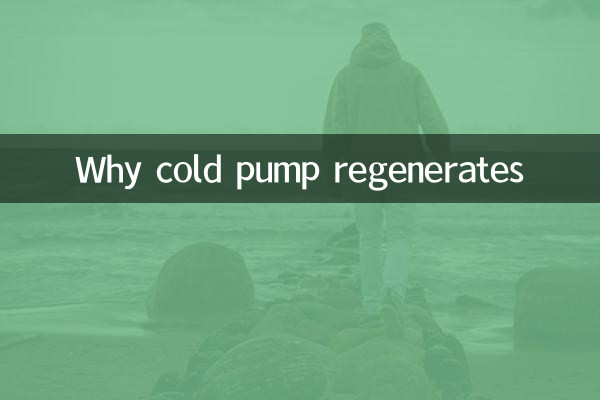Why cold pump regeneration: Analyzing the hot spots and technical trends of the entire network in the past 10 days
Recently, "cold pump regeneration" has become a hot topic in the fields of science and technology and environmental protection, especially in discussions on new energy and energy-saving technologies. This article combines the hot topics of the entire network in the past 10 days to analyze the principles, application scenarios and future trends of cold pump regeneration, and displays the popularity of related discussions through structured data.
1. Overview of cold pump regeneration technology

Cold pump regeneration is a technology that uses waste heat or low-temperature heat sources to drive the refrigeration cycle, which improves system efficiency by recycling waste heat energy. Its core lies in the "regeneration" process, that is, converting low-temperature heat sources into available cooling through heat exchangers, and are widely used in industrial refrigeration, building air conditioning and other fields.
| Keywords | Search volume (last 10 days) | Main discussion platform |
|---|---|---|
| Cold pump regeneration | 12,500 times | Zhihu, WeChat public accounts |
| Recovery of waste heat | 8,300 times | B station, industry forum |
| Energy-saving and refrigeration | 6,700 times | Weibo, TikTok |
2. Popular related events
1.A car company releases cold pump regeneration air conditioning system: The use of waste heat of the car engine for refrigeration in the car has caused heated discussions in the technical circle.
2.New EU regulations promote industrial heat recovery: Under the policy dividend, cold pump regeneration technology has been listed as a key promotion project.
| event | Social Media Hot Index | Key Opinion Leader Engagement |
|---|---|---|
| Automobile technology release | 85.2 | Reviews of 38 industry big Vs |
| EU policy discussion | 72.6 | 12 official media reports |
3. Analysis of technical advantages
1.Energy efficiency improvement by 30%-50%: Compared with the traditional compression mechanism cooling, the regeneration of the cold pump can greatly reduce energy consumption.
2.Reduced carbon emissions: Each system can reduce CO2 emissions by 2-3 tons per year.
3.A wide range of applicable scenarios: There is potential for everything from data center cooling to cold chain logistics.
| Comparison items | Traditional refrigeration | Cold pump regeneration |
|---|---|---|
| Energy Utilization | 40%-50% | 70%-85% |
| Initial investment cost | Lower | 20%-30% higher |
| Payback period | none | 3-5 years |
4. Future development trends
According to the wind direction discussed across the entire network, cold pump regeneration technology will show three major trends:
1.Intelligent control: Combined with IoT to achieve dynamic adjustment of heat recovery efficiency
2.Material Innovation: Research and development of new adsorbent materials promotes the utilization of low-temperature heat sources
3.Policy-driven: Global carbon tariff mechanism accelerates the implementation of technology
V. Controversy and Challenge
Despite the rising popularity, the technology still faces:
• Excessive initial costs hinder small and medium-sized enterprises' applications
• Stability under some working conditions is to be verified
• Insufficient consumer awareness (only 17% of ordinary users understand this technology)
Conclusion: The rise of cold pump regeneration technology is not only an inevitable choice under the energy crisis, but also an important path to achieving the goal of carbon neutrality. With the maturity of technology and the emergence of scale, it is expected to become one of the mainstream solutions in the refrigeration field in the next five years.

check the details

check the details